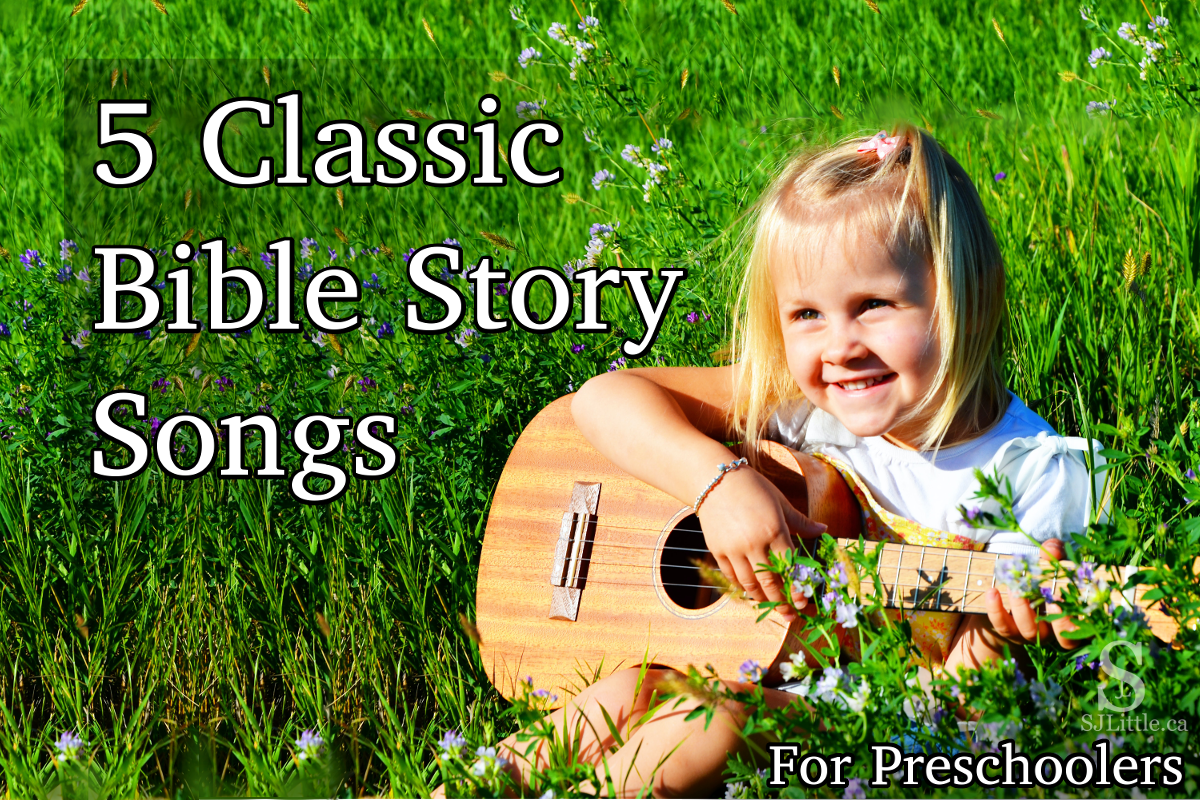
As Christian parents and teachers, we desire to introduce our children to the Bible while they are young. That’s why I’ve compiled this list of songs. These classic Bible story songs will engage your preschoolers in an exciting way while teaching them the Bible. Chances are, you may be familiar with some of these songs. Have you introduced them to your children yet? If not, perhaps today is a good day to start!
Because most of these songs directly correlate with the Bible stories they are telling, I would encourage you to try using visuals to tell the story as you sing it the first time. This helps young children associate meaning with the words they are singing.
Some of these songs have well-defined actions, while others don’t. For some of the songs, I have suggested my favourite actions. For others, I will let the videos show you some possible actions. If the actions don’t suit your fancy, feel free to make up your own!
Please note: The sample videos I have included were chosen for the clarity of the song and actions. I am not associated with any of them and have not done extensive research into the groups who posted them. Also, while I tried to find videos similar to how I prefer to sing these songs, some actions and/or words may vary from the versions I have recommended for you.
1. Arky Arky (Rise and Shine)
I chose this Bible story song about Noah because I appreciate how it includes God. It was God who told Noah to build the ark, and it is God who deserves all the glory. This song also has silly rhyming which is sure to thrill many preschoolers.
Depending on the age of your children, consider repeating the chorus after every verse or after every two verses. I would repeat the chorus more often for younger children.
Genesis 6:8-9:17
The Lord told Noah,
There’s gonna be a floody, floody.
Lord told Noah,
There’s gonna be a floody, floody.
Get those animals out of the muddy, muddy –
Children of the Lord.
(Chorus) So, rise and shine and,
Give God the glory, glory!
Rise and shine and,
Give God the glory, glory!
Rise and shine and,
Give God the glory, glory –
Children of the Lord.
The Lord told Noah,
To build him an arky, arky.
Lord told Noah,
To build him an arky, arky.
Build it out of gopher barky, barky –
Children of the Lord.
(Repeat chorus)
The animals, the animals,
They came in by twosies, twosies.
Animals, the animals,
They came in by twosies, twosies.
Elephants and kangaroosies, roosies –
Children of the Lord.
(Repeat chorus)
It rained and poured,
For forty daysies, daysies.
Rained and poured,
For forty daysies, daysies.
Almost drove those animals crazy crazies –
Children of the Lord.
(Repeat chorus)
The sun came out,
And dried up the landy, landy.
Sun came out,
And dried up the landy, landy.
Everything was fine and dandy, dandy!
Children of the Lord.
(Repeat chorus)
2. Only a Boy Named David
This song, and the Bible story it recounts, are truly classics. I recommend singing it standing so your children can get some energy out spinning and then pretending to fall down like Goliath. Who knows? This one might just become your child’s favourite!
1 Samuel 17
Only a boy named David.
Only a little sling.
Only a boy named David,
But he could pray and sing.

Only a boy named David.
Only a rippling brook.
Only a boy named David,
But five little stones he took.
And one little stone went into the sling,
And the sling went round and round.
And one little stone went into the sling,
And the sling went round and round.
And round and round,
And round and round,
And round and round and round.
And one little stone went into the air,
And the giant came tumbling down.
Suggested actions:
Only a boy named David – hold hand out as though patting the head of a child
Only a little sling – pretend to swing a sling over your head
But he could pray and sing – fold hands in prayer and/or pretend to strum a guitar
Only a rippling brook – wiggle fingers while moving hands from right to left
But five little stones he took – hold up five fingers
One little stone went into the sling – hold up one finger, then put finger into other hand
The sling went round and round – swing imaginary sling around over head
Round and round – if standing, turn around while swinging sling
One little stone went into the air – point one finger as though following path of the flying stone
The giant came tumbling down – fall down
3. Who Did Swallow Jonah
This could be a fun song to get creative with. Try letting individual children take turns singing “who did?” There are 12 “who did” parts per verse, not including the “who did swallow Jo, Jo, Jo, Jo” part which could be sung all together.
Jonah 1-3
Who did? who did?
Who did? who did?
Who did swallow
Jo, Jo, Jo, Jo?
Who did? who did?
Who did? who did?
Who did swallow
Jo, Jo, Jo, Jo?
Who did? who did?
Who did? who did?
Who did swallow
Jo, Jo, Jo, Jo?
Who did swallow Jonah…
Who did swallow Jonah…
Who did swallow Jonah down?
Whale did, whale did,
Whale did, whale did,
Whale did swallow
Jo, Jo, Jo, Jo.
Whale did, whale did,
Whale did, whale did,
Whale did swallow
Jo, Jo, Jo, Jo.
Whale did, whale did,
Whale did, whale did,
Whale did swallow
Jo, Jo, Jo, Jo.
Whale did swallow Jonah…
Whale did swallow Jonah…
Whale did swallow Jonah down.
Optional other verses:
Daniel, Daniel, … Daniel in the li, li, li, li.
Daniel in the lion’s, … Daniel in the lion’s den.
Gideon, Gideon… Gideon blow your trump, trump, trump, trump.
Gideon blow your trumpet, … Gideon blow your trumpet loud!
4. Zacchaeus
Another timeless classic Bible story song that has been loved by many! Want proof? Look up “sings Zacchaeus” on Youtube and you’ll find many recordings of young children trying to sing this song. The song and storyline are simple enough for a child to follow. The actions, also, are straight forward. I’ll let the video teach them to you, other than one comment. In order to make the actions more full-body, I recommend walking in place as you sing “And as the Savior passed that way.”
Luke 19:1-10
Zacchaeus was a wee little man,
And a wee little man was he.
He climbed up in a sycamore tree,
For the Lord he wanted to see.

And as the Savior passed that way,
He looked up in the tree,
And said, “Zacchaeus, you come down!
For I’m going to your house today!
For I’m going to your house today!”
Optional Verse:
Zacchaeus was a wee little man,
But a happy man was he.
For he had seen the Lord that day,
And a happy man was he;
And a very happy man was he.
5. Peter and John Went to Pray (Silver and Gold)
This is another fantastic Bible story song in that it has an easy to follow storyline that can correlate well with actions. I especially appreciate how accurately this song tells the story in line with Acts 3:1-10.
Peter and John went to pray;
They met a lame man on the way.
He asked for alms and held out his palms,
And this is what Peter did say:
“Silver and gold have I none,
But such as I have I give you.
In the name of Jesus Christ
Of Nazareth, rise up and walk!”
He went walking and leaping and praising God,
Walking and leaping and praising God.
“In the name of Jesus Christ
Of Nazareth, rise up and walk.”
6. Bonus!
Here’s a bonus recommendation for you. This song, titled “Stories” by Go Fish, includes both “Only a Boy Named David” and “Zacchaeus” in a catchy, upbeat modern song. I encourage you to take a moment to listen.
What are your favourite classic Bible story songs to sing with your preschoolers?
Other preschool songs on SJLittle.ca:
7 Simple Christian Songs for Preschoolers
Another 7 Simple Christian Songs for Preschoolers




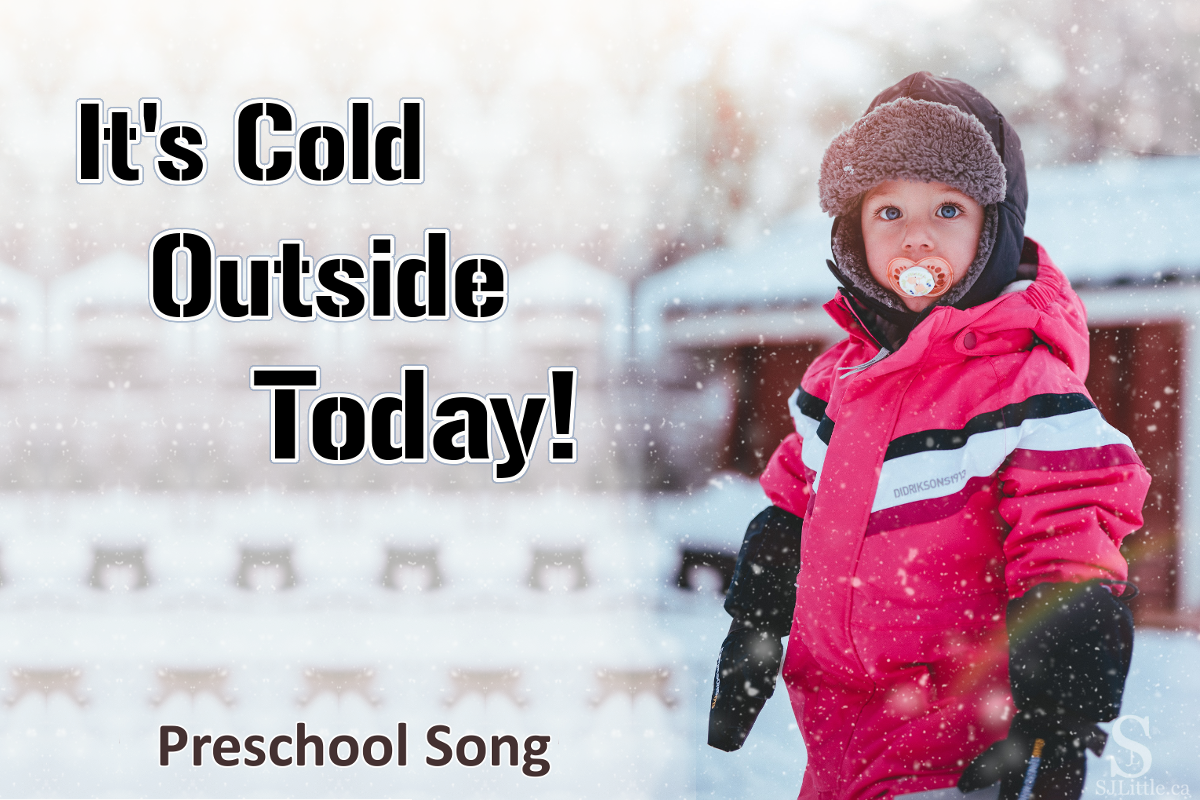
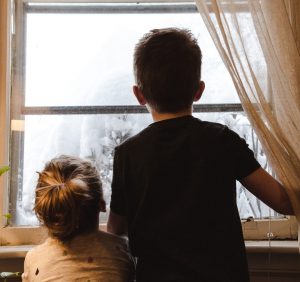

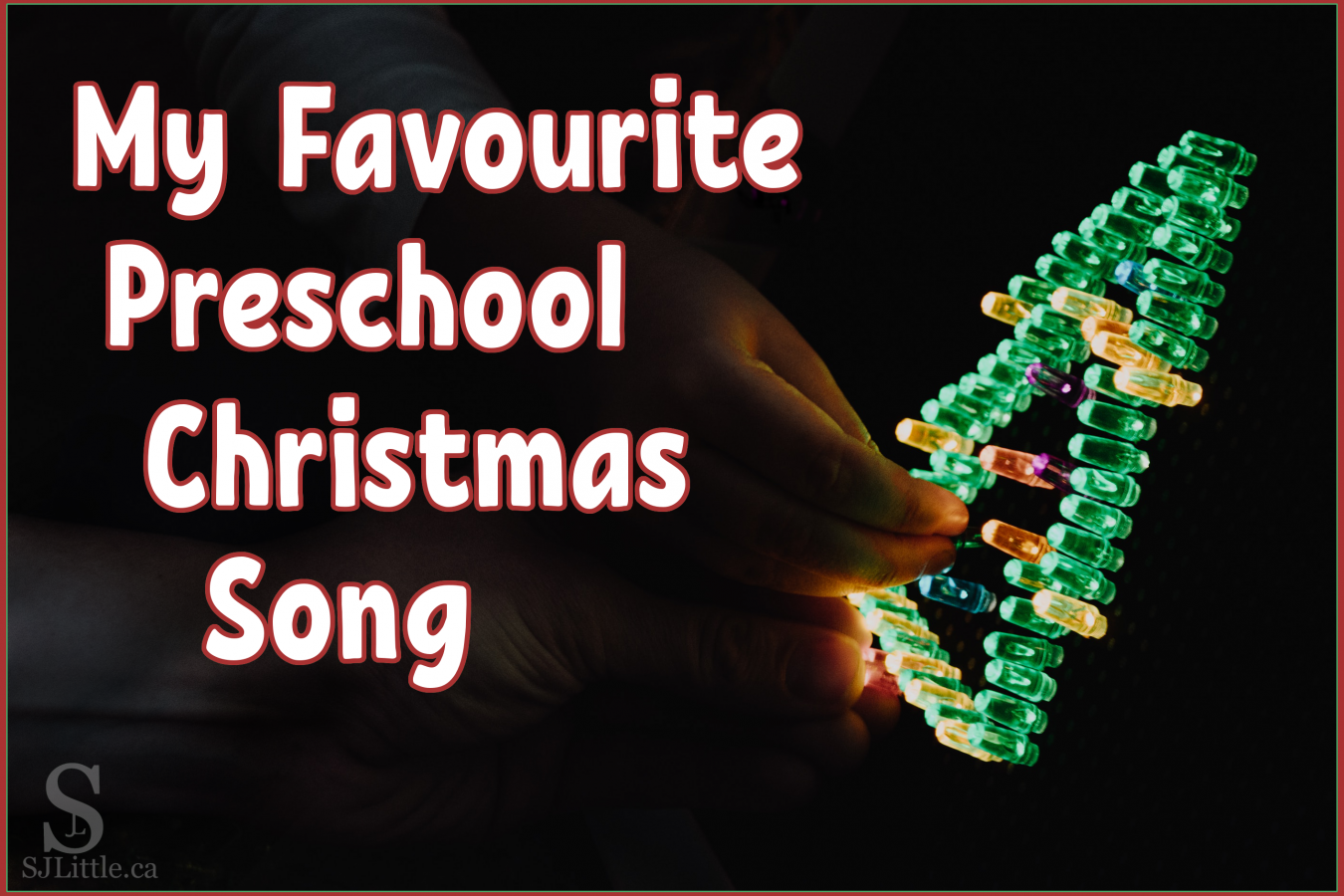
 secular programs, this song is acceptable. It does not teach about Jesus or Santa Claus, leaving parents the freedom to choose what they teach their children about Christmas. In secular settings, I sing this song alongside Jingle Bells, which is another song traditionally sung around Christmas time, but without any mention of Jesus or Santa.
secular programs, this song is acceptable. It does not teach about Jesus or Santa Claus, leaving parents the freedom to choose what they teach their children about Christmas. In secular settings, I sing this song alongside Jingle Bells, which is another song traditionally sung around Christmas time, but without any mention of Jesus or Santa.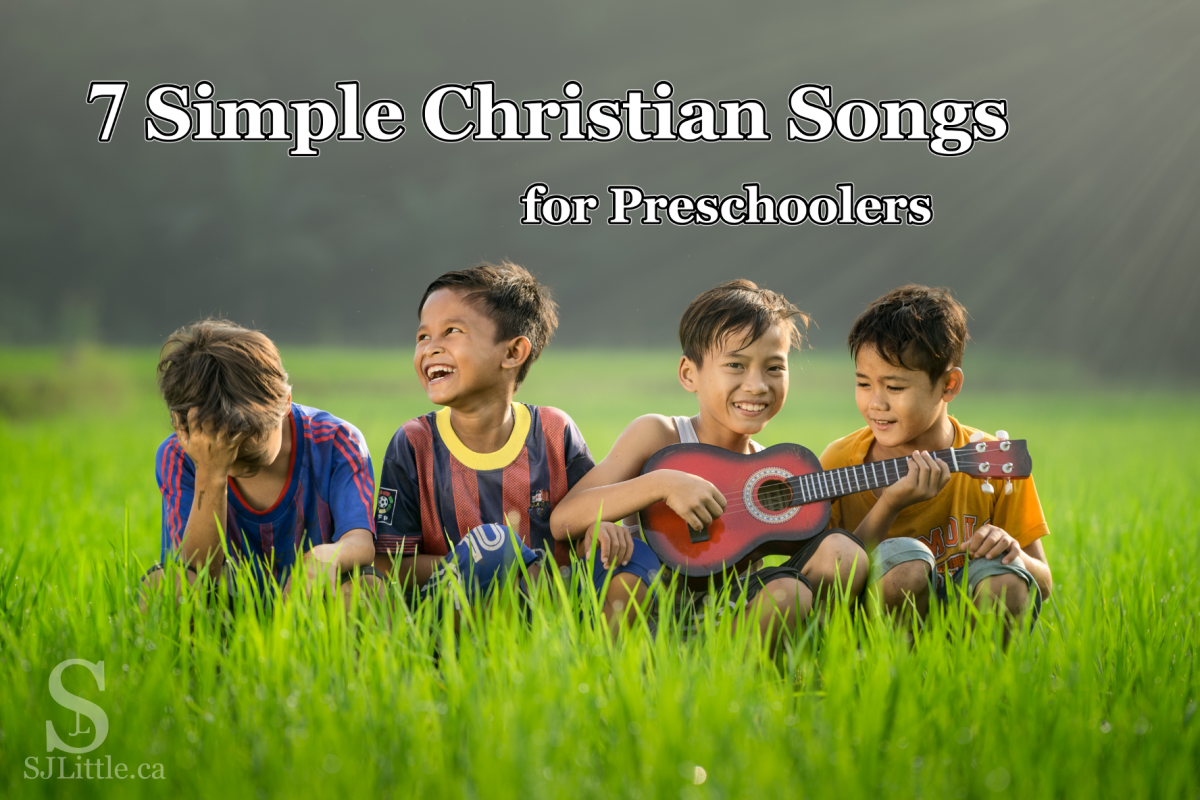

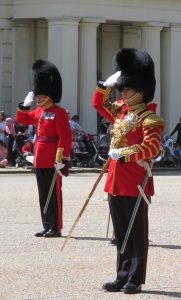
 Did you enjoy these 7 Simple Christian Songs for Preschoolers? If so, be sure to check out the follow up post titled “
Did you enjoy these 7 Simple Christian Songs for Preschoolers? If so, be sure to check out the follow up post titled “